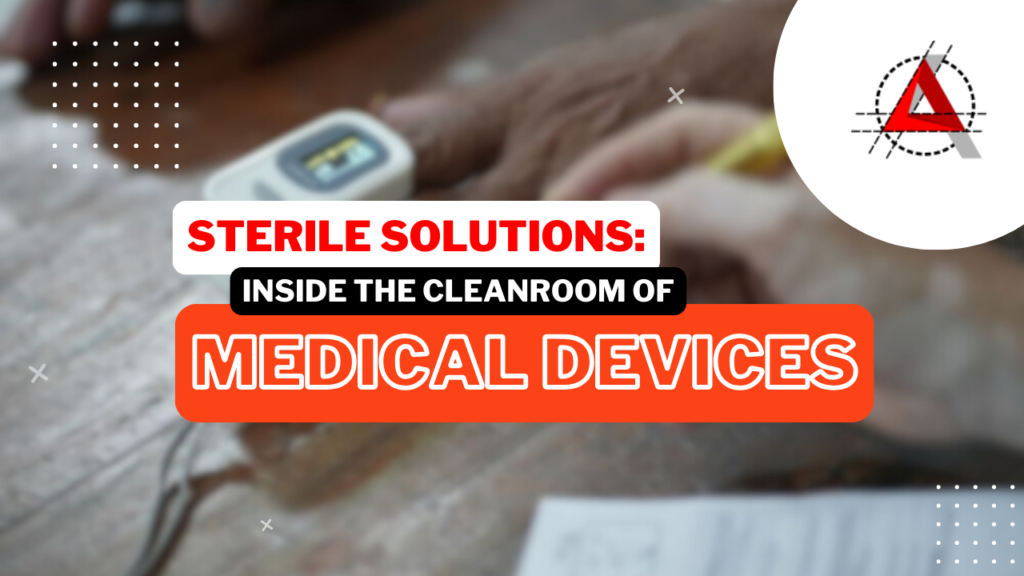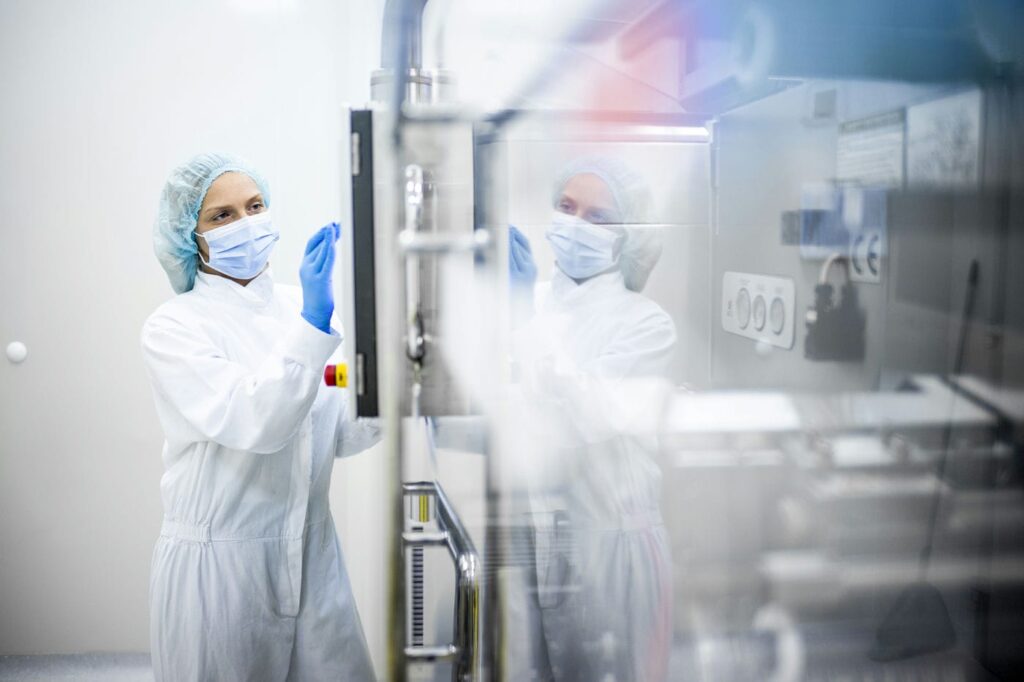Sterile Solutions: Inside the Cleanroom of Medical Devices

To assure product quality, patient safety, and regulatory compliance, a contaminant-free manufacturing environment is necessary to produce medical devices. Because they offer a controlled environment with less risk of contamination, cleanrooms are essential to meeting these criteria. This blog examines the value of cleanrooms in the production of medical devices, as well as the laws and guidelines that control them and the best ways to keep a clean environment.
The Importance of Cleanrooms in Medical Device Manufacturing
Medical devices must adhere to strict standards for sterility and cleanliness, from surgical instruments to implantable devices. Even slight contamination can result in product flaws, putting patient health at serious risk and necessitating expensive recalls. Because they offer a regulated environment with stringent regulations on particle and microbiological contamination, cleanrooms are crucial for reducing these risks.
Cleanroom Standards and Regulations
Cleanroom conditions to produce medical devices are governed by a number of regulations and standards organizations. Achieving compliance with these criteria guarantees that items are produced with the highest standards of quality and cleanliness.
- ISO 14644: The classification of air cleanliness in cleanrooms and related controlled environments is defined by this set of standards. It outlines the highest amounts of different-sized airborne particle concentrations that are permitted.
- ISO 13485: This international standard lays out specifications for a cleanroom operations procedure as well as standards for a quality management system unique to the medical device sector.
- FDA Regulations: The Food and Drug Administration (FDA) in the US establishes guidelines to produce medical equipment, including specifications for cleanroom settings.
- GMP (Good Manufacturing Practices): These rules guarantee that goods are continuously manufactured and monitored in compliance with quality requirements. They address every facet of manufacturing, including the layout and management of cleanrooms.
Key Features of Medical Device Cleanrooms
- Controlled Environment: Environmental elements including temperature, humidity, and pressure are strictly regulated in cleanrooms, which is essential for avoiding infection.
- Air Filtration: Microorganisms and particulates in the air are eliminated using Ultra-Low Penetration Air (ULPA) or High-Efficiency Particulate Air (HEPA) filters. These filters are crucial for preserving the hygienic standards needed to produce medical devices.
- Personnel Protocols: To ensure that employees do not introduce contaminants into the cleanroom, stringent protocols are in place. This includes gowning procedures, hygiene precautions, and movement restrictions.
- Surface Cleanliness: The materials used to construct the equipment, walls, and floors of the cleanroom reduce the production of particles and are simple to clean and disinfect.
- Monitoring Systems: Maintaining cleanroom standards requires constant observation of the surrounding environment and the concentrations of airborne particles. This covers the application of surface sampling, microbiological air samplers, and particle counts.

Best Practices for Maintaining Cleanroom Standards
- Regular Training: Regular training on cleanroom procedures, hygiene standards, and the appropriate handling of cleanroom clothing and equipment should be provided to staff members.
- Routine Cleaning and Disinfection: Establish a rigorous cleaning program with daily, weekly, and monthly assignments to guarantee that all surfaces and equipment are kept free of contaminants.
- Environmental Monitoring: Keep track of and document environmental variables like temperature, humidity, air pressure, and particle matter on a constant basis. Make use of this data to spot patterns and contamination hazards.
- Controlled Access: Permit only authorized personnel to enter the cleanroom. Establish gowning facilities and air showers as entry measures to lower the risk of contamination.
- Equipment Maintenance: Maintain and examine cleanroom equipment on a regular basis to make sure it is operating properly and not spreading contamination. Production equipment, HVAC systems, and air filtering systems fall under this category.
- Contamination Control: Implement measures to prevent contamination from workers, supplies, and equipment, among other sources. The use of sterile or pre-sterilized supplies, appropriate handling and storage practices, and frequent microbiological testing may all be necessary for this.

Cleanrooms are indispensable in the manufacturing of medical devices, providing the controlled environment necessary to meet stringent cleanliness and sterility standards. By adhering to industry regulations and implementing best practices for cleanroom operation and maintenance, medical device manufacturers can ensure product quality, protect patient safety, and achieve regulatory compliance. Continuous improvement and vigilance are key to maintaining the exacting standards required in this critical industry.
At ACH Engineering, we specialize in providing turnkey solutions for controlled environments, freezer rooms, and cold rooms that are specifically suited for the medical device sector. Our knowledgeable staff makes sure that all regulatory requirements are met, producing dependable, energy-efficient buildings on schedule and within budget. Together, we can improve your operations with innovative solutions. To explore your needs and learn how we can help your business, contact us today.
GET IN TOUCH
Complete the form below to get in touch with our team.
